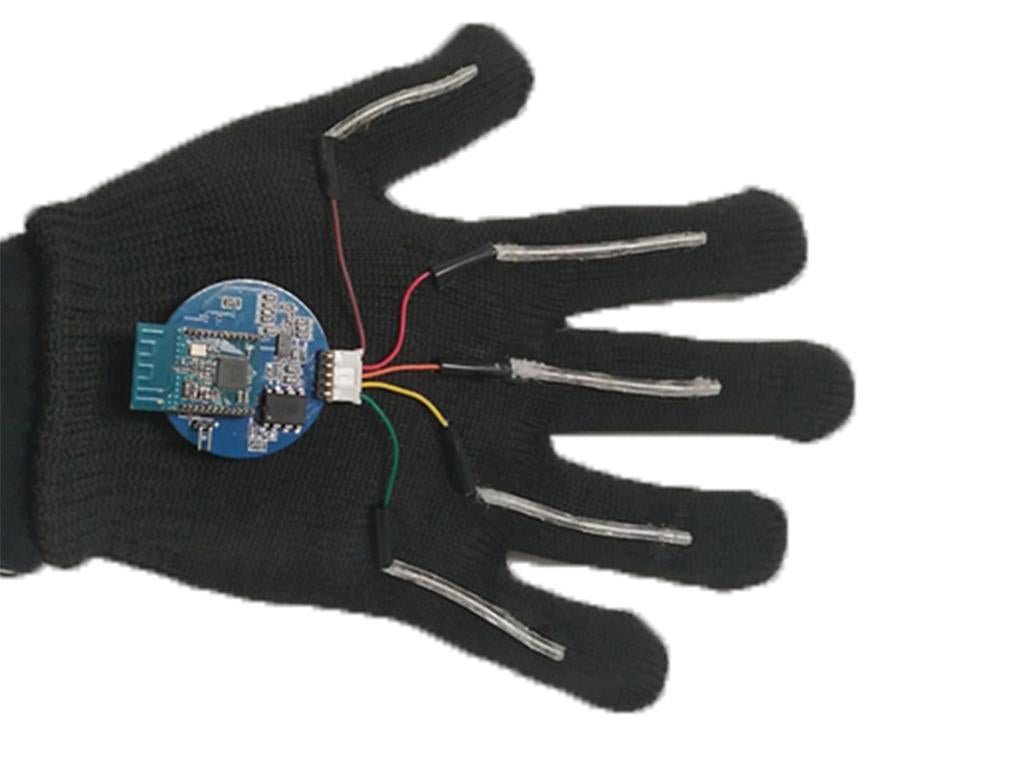New glove translates sign language to speech in real time
The glove uses machine learning and a smartphone app to translate signs to words

Your support helps us to tell the story
From reproductive rights to climate change to Big Tech, The Independent is on the ground when the story is developing. Whether it's investigating the financials of Elon Musk's pro-Trump PAC or producing our latest documentary, 'The A Word', which shines a light on the American women fighting for reproductive rights, we know how important it is to parse out the facts from the messaging.
At such a critical moment in US history, we need reporters on the ground. Your donation allows us to keep sending journalists to speak to both sides of the story.
The Independent is trusted by Americans across the entire political spectrum. And unlike many other quality news outlets, we choose not to lock Americans out of our reporting and analysis with paywalls. We believe quality journalism should be available to everyone, paid for by those who can afford it.
Your support makes all the difference.Bioengineers have designed a glove that is able to translate American Sign Language to speech in real time.
The glove has thin, stretchable sensors inside which run to the fingertips. These sensors are able to pick up and motions and finger placement through electrically conducting yarns.
Those sensors are then connected to a small piece of circuit board – approximately the size of a coin – that users wear on their wrists.
As such, when people move their hands and fingers to sign words, the glove is able to translate the individual letters, numbers, words and phrases into spoken words.
Extra sensors can be added to the face, between the eyebrows and on the sides of the mouth, to capture facial expressions.
The actual translation is done through a smartphone app, which uses a custom custom machine-learning algorithm to turned gestures into the letters, numbers and words.
The system recognises 660 signs, which includes each letter of the alphabet and the numbers from zero to nine.
It can translate at a speed of one word per second.
A commercial version of this technology would require more vocabulary and a faster translation time. UCLA has filed a patent on the glove.
“Our hope is that this opens up an easy way for people who use sign language to communicate directly with non-signers without needing someone else to translate for them,” said Jun Chen, the principal investigator on the glove.
“In addition, we hope it can help more people learn sign language themselves.”
Zhihao Zhao, Kyle Chen, Songlin Zhang, Yihao Zhou and Weili Deng, from the University of California, Los Angeles (UCLA), authored the study that developed the glove, alongside Chen.
Jin Yang, of China’s Chongqing University, also authored the study.
The benefits of the glove are its portability and weight. Previous wearable devices offered similar capabilities, but were heavy and impractical to wear.
This new design is far lighter, and the polymers are inexpensive – as are the electronic components.
However, some deaf researchers have criticised the development.
"The tech is redundant because deaf signers already make extensive use of text-to-speech or text translation software on their phones, or simply write with pen and paper, or even gesture clearly," said Gabrielle Hodge, a deaf researcher from the Deafness Cognition and Language Research Centre at University College London, to CNN. "There is nothing wrong with these forms of communication."
"It would be so much easier if tech focused on user-driven and user-centered design in the first instance, rather than dreaming up 'solutions' they think will fix all the problems in the world."
Join our commenting forum
Join thought-provoking conversations, follow other Independent readers and see their replies
Comments